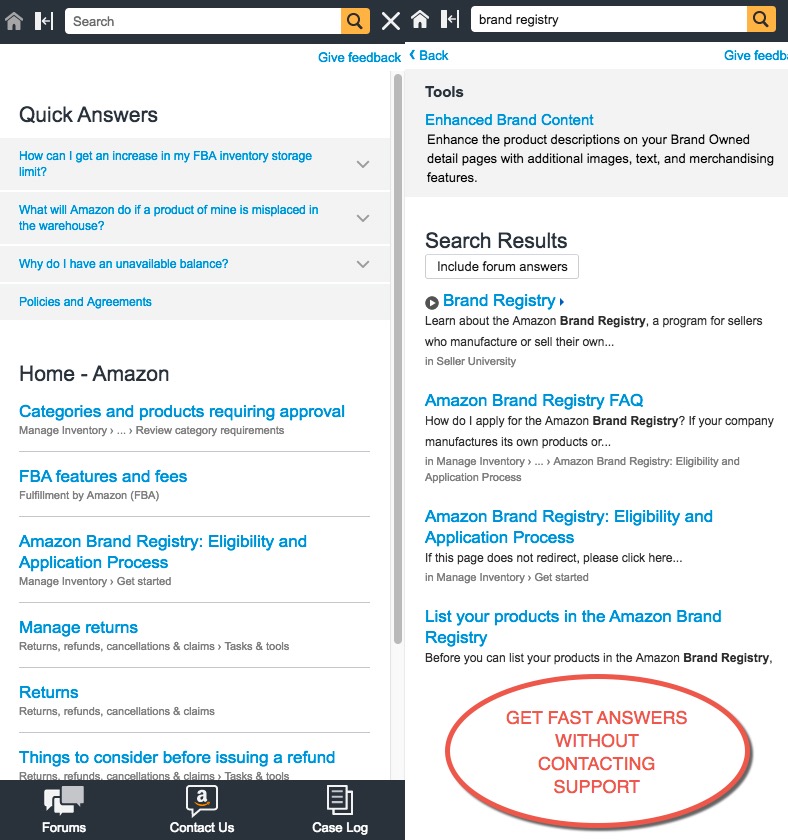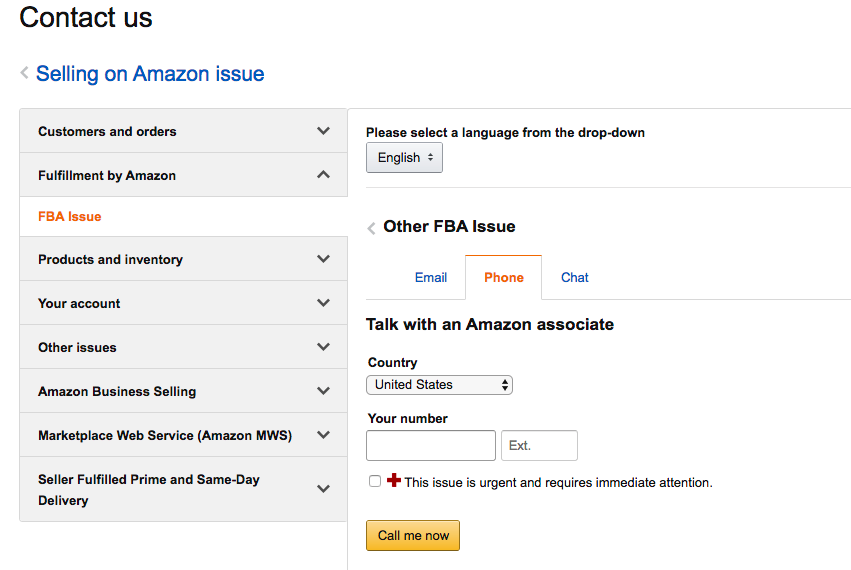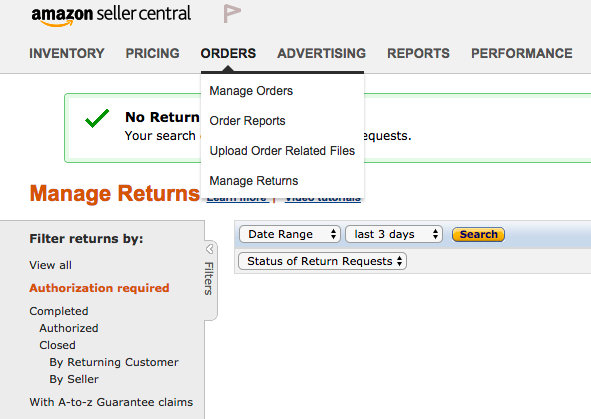Blog: 7 Steps To Get The Most Out Of Amazon Seller Central â The FBA Guide
7 Steps To Get The Most Out Of Amazon Seller Central â The FBA Guide
Let’s face it, Amazon’s Seller Central platform for sellers does not exactly have a reputation of being user friendly and intuitive. In fact, it has a little bit of a bad rep.
Like it or loathe it, it is the one thing you are going to have to get used to if you’re a serious FBA seller. For all of it’s faults, it is the key to unlocking huge business potential on the world’s largest ecommerce platform. Providing you also find the right products to sell, of course ;).
Nothing worth having comes without any frustrations, right!?
This article is going to give you a tip top list of things you need to know to make the most of Amazon Seller Central. We’re going to run through loads of insightful stuff, including:
- Getting set up
- Ensuring your account is secure
- Pitfalls and things to avoid
- How to extract useful business metrics
- Resolving issues quickly and effectively
Let’s just get to it, shall we?
1. Getting set up correctly on Amazon Seller Central
First things first, you only need one Seller Central account to sell in a single marketplace. Even if you sell numerous products and have a few different brands, you can do all of this within your single account.
Accounts Across Marketplaces
The only time you would need to set up numerous Seller Central accounts is if you plan to sell in multiple continents/regions. Amazon has unified accounts for North America (Canada, US and Mexico) and Europe (UK, Germany, Italy, France and Spain). At the time of this writing, it's our understanding you need additional individual accounts for the other marketplaces like India or Japan.
Seller Central Fees
If you plan to sell fewer than 40 items per month then you can pay a small fee per sale. This is not going to be suitable for entrepreneurial ecommerce business owners.
You will need to set up a Professional account, with a subscription fee of $39.99 per month. Here’s a useful Amazon help article about setting up accounts.
What You Will Need
Here’s a handy checklist of everything you need to get set up:
- Your business name (this will be visible to customers)
- Your real name and address, using your registered company address, if you have one
- Contact information for Amazon and separate contact information for Customers (doesn’t need to be separate but it’s recommended)
- Your “Shop From” location
- Your bank account information so that you can get paid
- Which regions you are willing to ship to (for associated costs, you would be better off setting up in other marketplaces rather than shipping a US FBA product to Europe)
Once this is done, you will also need to fill out your seller profile. This is customer facing information:
- A small seller logo of 120x30px which will be available on your storefront
- The “About Seller” section is where you can tell a story about your business, share your company values or any other information about your company. This is a great opportunity to position yourself as a successful business, show your attitude towards customer support, and instill trust in potential buyers that read about you.
- Return and refund policies
2. Ensure your account is secure with Amazon Two-step Authentication
Have you heard the news yet? Amazon has introduced two-step authentication!
Essentially, this means that rather than just entering your password, you can add an additional layer of security to your account by having to enter a unique security code.
This second step could be one of the following:
- Text Message – Amazon will message you a code to your phone
- Voice Call – Amazon will call you and read a code out
- Authenticator App – You can use apps like Authy (team Jungle Scout's favorite) or Google Authenticator to connect with your account, which will generate codes which you can use to sign in with two-factor
Tip: Especially for people who travel a lot, I find Authy is better as it will store all of your apps if your phone is lost, stolen or replaced. Using Google’s app may end up getting you locked out of your accounts, which isn't fun at all!
Security is of utmost importance for any business. We have strict security rules in place at Jungle Scout that the whole team adheres to. It takes a few extra seconds out of your day but prevents severe ramifications if your account got hacked.
It’s not worth thinking about what could happen if someone got into your seller central account with malicious intent could do! 😱
A Note on passwords
Whilst we are here having “the security talk” it’s worth mentioning that you should also generate secure passwords for everything business related. Make your passwords at least 12 characters long, and ensure they include random numbers, letters and special characters.
Using a password like “Mydogsname1234” won’t cut it.
You could try a free password vault service like LastPass to generate and store your passwords securely.
3. Give your employees or VA access
A little shout out for those sellers who are expanding, outsourcing, and looking at hiring employees or VA’s to help out with tasks.
You can grant access to your account for other people pretty easily without the need to contact Amazon using their invitation model.
- To set up users, the Account Manager (Owner) must set up the initial account using the Amazon Checkout Registration process, and add a list of people who can access the system and what rights those users should have.
- The Account Manager sends an email invite to new users.
- After clicking the link to the invite, the new user navigates to a page that instructs them to sign in with an existing Amazon account or to create a new one. Once that is done, they will get a confirmation code to pass to the Account Manager.
- After the Account Manager confirms using the code, the new user can go to sellercentral.amazon.com to log in using their account.
You can add, edit, revoke or change user rights at any time. So if you are thinking of spreading some of your workload, this is a simple way to get someone set up!
4. Getting the most out of your business metrics
One of the main reasons to get familiar with Seller Central is that it holds all of your important business metrics. From your sales reports to PPC reports, if you are running any Amazon pay-per-click campaigns to leverage more sales.
What do you think your most important business metrics are? The number of times people view your product? How many times someone purchases your product? Your conversion rate?
I would argue that you need to keep a balanced overview of all of these metrics. It’s crucial to understand how each of them can give you signals about how your products are performing, and how you can improve and scale. However, most of all it’s important to consider all of these metrics against the most important piece of data of all, your profits!
Get your Amazon Analytics on track
You can go into your reports in Seller Central from the main menu under ‘Reports’.

In here you will find reports for your payments, business reports (sales reports), fulfillment, advertising (PPC) and returns. Getting familiar with the data these reports is very important. You can download any of these reports as a CSV and manipulate your data in any way you want.
In an ideal world, you would be running reports and diving into the data frequently. But doing it this way requires a lot of work, analysis and number crunching.
To save time and headaches, you could try Fetcher, and get your own Profit Analytics dashboard set up in a few minutes. This allows you to access all of your important finance stats at a glance, with guaranteed accuracy.
This could save you hours in excel each month, by giving you a product breakdown, an overview of your revenue, and costs including PPC, promos, fees and more.

A note on Amazon Conversion Rates
Speaking of conversion rate, check out this really useful article on the Splitly blog that explains exactly what Amazon conversion rate is, how it works and it’s limitations. There are some really useful tips in there about how you can take steps to increase your conversion rate by a small percentage point, which could make a huge impact on your bottom line.
5. Use the product information fields wisely
Making the most of the product information fields that form your product listings seems obvious. But when was the last time you checked your product listing was up to scratch?
When it comes to our product listings, we are stuck with the fields that Amazon provides us with. It’s really important that we make the most of these, and fill in as much information as possible, in an optimized way.
Here are some tips for things you can check right now that could help boost your listing straight away:
- Are you using up all of the available space? Ensure you are using up all 5 features fields, fill your description with useful information, a narrative and your top keywords.
- If you are Private Label, have you tried using Enhanced Brand Content? This is a great way to make your listing more visual with HTML and images in your description area.
- How many product images do you have? Having more images can result in more sales, so if yours are looking light it might be time to add some. Check out this guide on taking high-quality product photography with a smartphone.
- On top of this, you need to ensure that your product information has been populated with relevant target keywords. This should be both on the public listing that potential customers can see as well as including lots of keywords in the “Search Terms” section in the back-end of Seller Central.
I covered this very topic and how to carry out effective keyword research in session #11 of our Million Dollar Case Study, catch the recap here!
6. Learn how to navigate Amazon seller support
You can hear an audible sigh of frustration the world over when an Amazon seller runs into difficulties with the Seller Central platform. Just as the platform itself gets a bad reputation sometimes, so does Amazon's seller support.
Use the search bar!
The good news is, there is an infinitely useful wealth of help documents waiting for you. Just click the small help button in the top right-hand corner:

In here you will enter the Seller Central help desk where you can search straight away and access a ton of articles that are actually really useful.

Forums like Reddit often have useful information so a quick Google search is also advisable to resolve a whole host of problems that you might encounter. The likelihood is that someone else has already run into a similar issue.
Technical difficulties
If the problem you are having is technical or maybe you are seeing some bugs then the best option is to contact seller support. All truth be told, this can be a useful resource if you speak to the right person. If you go to the help desk as explained above, you can access the contact options as well as review any open ‘case logs', which keeps all of your support tickets handy.
- Try the call-back feature: this means Amazon will call you back straight away on any number you provide and you can speak to a real person.
- The messages function in the support panel in Seller Central is useful if you can't chat on the phone, but can take a little while to get a response.
In order to get the contact options, you will have to first select your problem and the tool will try to offer you a relevant article. You can usually then click on a link to say your problem is not listed and then you will get some contact options:

For some issues, you may also get a live chat option in addition to phone and email.
Be as patient and descriptive about your problem as possible. If you feel you are not getting anywhere with a support agent, try again later!
Additionally, you can join our popular FBA Competitive Edge Facebook group. There is a huge community of like-minded sellers in there with a sharing is caring mentality! 🦄
7. Don't forget about your own Customer Support
You have customers, and sometimes, those customers have issues. As an Amazon FBA seller you could let Amazon handle your returns and customer support. But you will get far better results if you are involved in your own support. In any case, wouldn't you want to know what your customers are saying about your product, or if there are any issues that you could resolve or improve?
Monitoring your returns regularly is very important because it can signal any red flags with a product. You can access returns reports in the reports section:

Also, you can also check any returns on a daily or weekly basis in the ‘Orders' tab, under ‘Manage returns':

Tip: I mentioned Fetcher earlier, which is also a very useful tool to keep track of all of your returns metrics
Other than the obvious steps you can take in providing a high-quality product and ensuring your listing describes the product accurately, the best way to improve Amazon customer support (and reduce returns), is with email campaigns. Jump Send is a fantastic investment to automate your customer support by setting up email campaigns to be sent out to all of your customers.
With these email campaigns you can leverage so much, for example:
- Send a campaign when a returns request is triggered, to ensure you are giving some extra support to unhappy customers.
- Send emails at certain times after each purchase to provide additional support. For example, you can request seller feedback or reviews. You can even send added value content or attachments to support the purchase.
There's lots more information about utilizing email campaigns for top-notch Amazon customer success over at the Jump Send blog.
Final words
That's my top tips for making the most out of Seller Central and ensuring that you kick your business off to a flying start. Let us know in the comments below if these tips have helped you along the way, or if you have any other useful ideas to share with the community!
